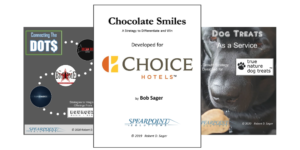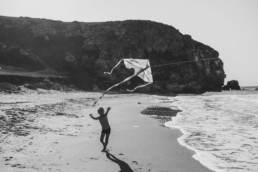The Power of Dreams
Creativity has shaped the course of human history, and it’s the pulsating heart of innovation, art, and scientific breakthroughs. As our world evolves faster than ever, many leaders have understood the power of innovation and have started to train their teams to think creatively in the hope of gaining an advantage over their competitors. So much so that we have learned to associate creativity with conscious thought and deliberate effort—that creativity is not something we are or have, but something we do.
But what if I told you that the true source of creativity was hidden somewhere in our subconscious, in a secret realm where ideas blossom and inspiration takes shape?
The Mystical Land of Dreams
Dreams have always been a fascinating topic for humanity. From ancient civilizations to modern times, they have captured our imagination and intrigued us with their enigmatic nature.
This topic is very meaningful to me because, before I even considered becoming an inventor and entrepreneur, a dream I had three years ago determined my life’s direction.
Advertisement
Is your business life FUN – or stressful?
Our Strategies Subscription will help you easily beat the competition, enhance your profits and have more FUN.
Get access to three strategies at no charge by clicking here or on the image below.
When I was seven months pregnant, I dreamt that my son was a toddler and he was playing with something I had invented. That dream triggered a series of events that brought me from jobless new mother to successful inventor and entrepreneur in less than three years.
After that first life-changing dream, I’ve found answers to my struggles and even fully developed inventions in my dreams.
But I’m not alone; many famous people attributed their most profound ideas to dreams and unconscious states. For example:
- Salvador Dalí, the renowned surrealist painter, took advantage of his dreams to create fantastical imagery that pushed the boundaries of art.
- Paul McCartney, the musical legend, composed the iconic melody for “Yesterday” after a dream, capturing a fleeting idea before it vanished.
- Mary Shelley’s Gothic masterpiece, “Frankenstein,” emerged from a vivid dream where a scientist breathed life into a creature.
- Niels Bohr, the Danish physicist and Nobel laureate, attributed his development of the atomic model, known as the Bohr model, to a dream he had about electrons spinning around a nucleus.
- Elias Howe, the inventor of the modern sewing machine, had a eureka moment when he was struggling to design a functional needle. He dreamt of being held captive by a group of natives who wielded spears with holes near the tip. This inspired him to create a needle with an eye near the pointed end.
- August Kekulé, the German chemist and pioneer of organic chemistry, discovered the structure of the benzene molecule in a dream. He saw a snake biting its own tail, which led him to the realization that the benzene molecule had a ring-like structure.
- James Cameron, the famous filmmaker, has revealed that the idea for the movie Avatar came to him in a dream he had when we was 19.
You Found It!
Our valued readers get a no-charge consultation on Monetizing Your Invention from Inventor of the Bendy Butler, Serena Fadlun. Click here or on Serena’s pic at the right for details.
The Hypnagogic State
The moments just before we drift off to sleep or right upon waking up can also be treasure troves of creativity. This state is known as the hypnagogic state, a transitional period between wakefulness and sleep. It’s a magical realm where the boundaries between the conscious and the subconscious blur, giving rise to innovative and unconventional ideas.
When Thomas Edison felt stuck with his inventions, he would nap in a chair, holding a small metal ball in one hand. As he drifted off, his hand would relax, and the ball would slip, causing a noise when it fell into a metal dish below. Edison believed that the sound would jolt him back to full consciousness, unlocking new ideas from his subconscious mind.
Salvador Dalí did the same thing while holding a key and used to call this method “slumber with a key”.
Scientific Perspectives
Stories are fun, but what does science have to say about all this?
It turns out that Edison and Dalí were right.
Studies have shown that dreams, meditation, and unconscious states can provide novel ideas and creative problem-solving strategies, and that dreams can facilitate divergent thinking, allowing for the recombination and synthesis of existing knowledge and experiences.
It seems that in the depths of our unconscious, the mind is liberated from the constraints of logic and opens doors to extraordinary possibilities. The bizarre and surreal nature of dreams provides a playground for the exploration of unconventional ideas. In this realm, the ordinary becomes extraordinary, and innovation sprouts from the seeds of imagination.
Advertisement
Is your business life FUN – or stressful?
Our Strategies Subscription will help you easily beat the competition, enhance your profits and have more FUN.
Get access to three strategies at no charge by clicking here or on the image below.
So what can we do about it?
Here is how you can take advantage of your subconscious creativity:
- Keep a Dream Journal: Keep a notebook by your bedside and make it a habit to write down your dreams as soon as you wake up.
- Don’t forget to Daydream: Set aside time during the day to let your mind wander and explore different possibilities. Walk in nature, find activities that stimulate your imagination, and get in the flow!
- Practice Creative Visualization: Before falling asleep, visualize the challenges or projects you’re working on. Imagine different scenarios and potential solutions. By actively engaging your subconscious mind through visualization, you invite it to collaborate in your creative process.
Sweet dreams!
Here is an audio version of the article.
Read by the author, Serena Fadlun.
Serena is an inventor, game designer and entrepreneur. She completed a BHSc in Psychology in Auckland, New Zealand and then returned to her home country (Italy) and worked as a translator for a few years.
In 2020 she became a mother and decided to follow her dream of becoming an inventor. After successfully licensing in the toy and game industry, she decided to bring one of her ideas to market on her own; The Bendy Butler. It will be available in June 2023.
Contact Information
Header Image Credit: Andrea Piacquadio. Find it here.









